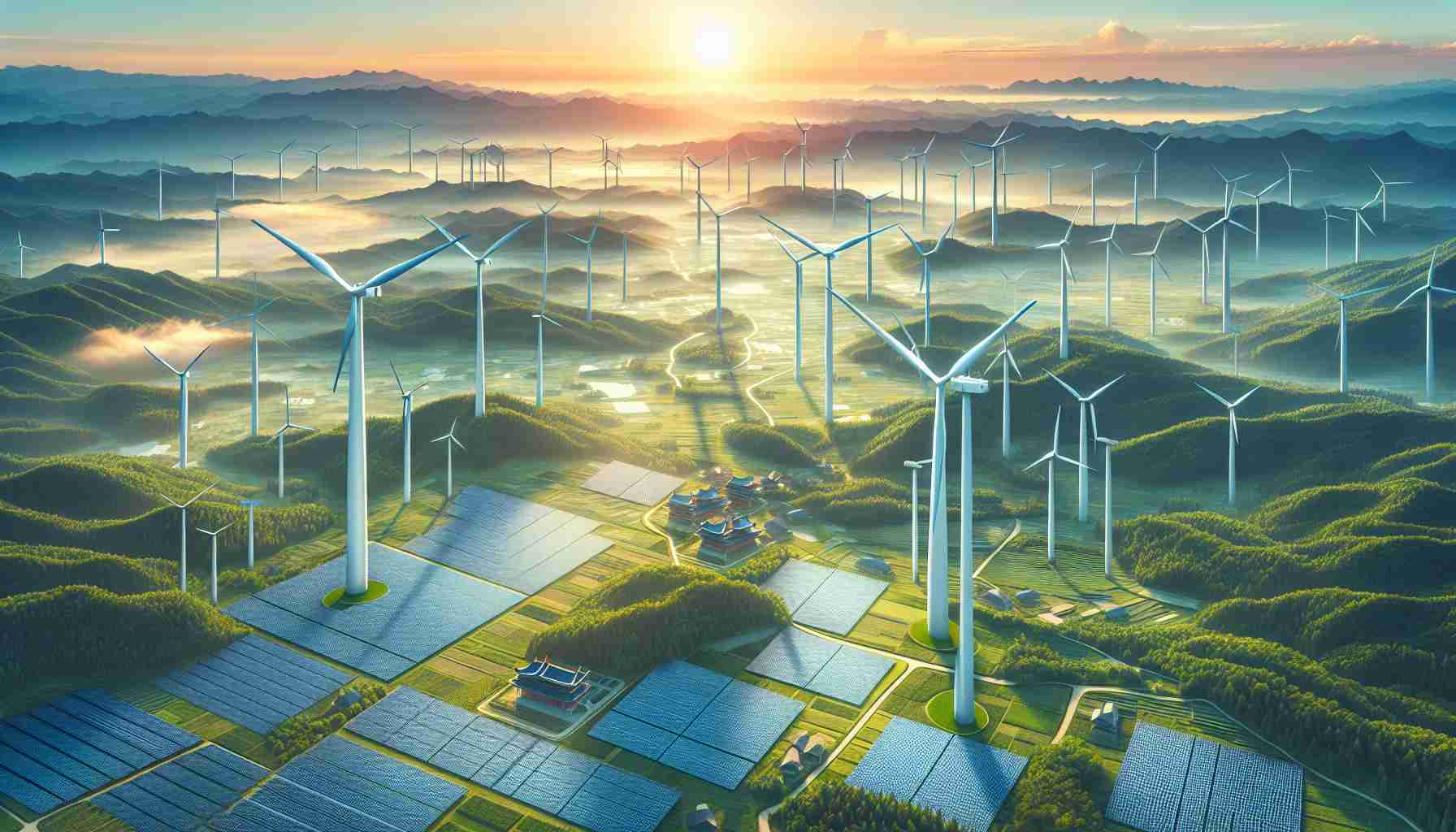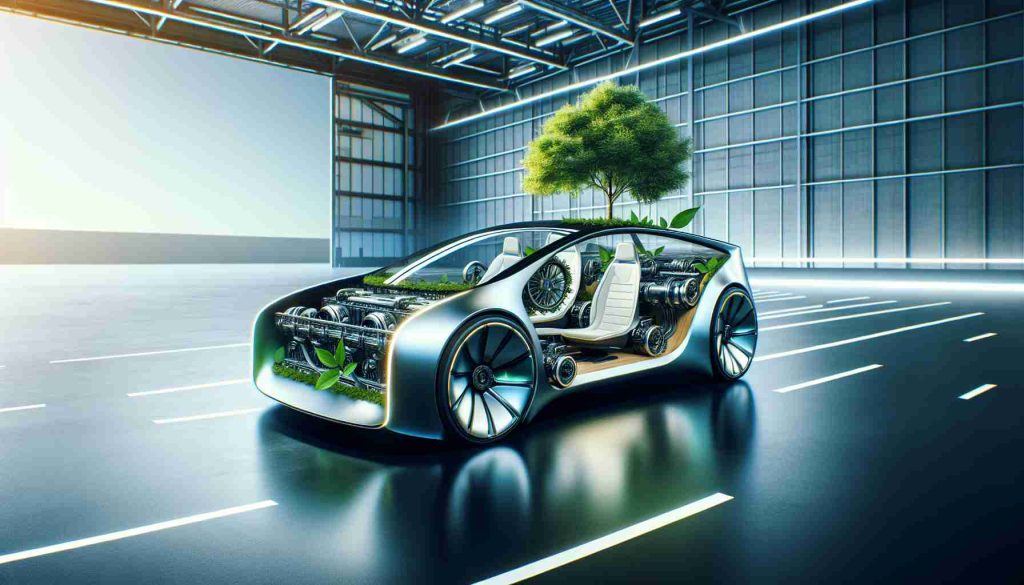As the world grapples with climate change, China is taking ambitious strides in renewable energy. The country’s latest endeavor? A bold project focusing on expanding its offshore wind capacity. Spearheading this initiative is a new generation of floating wind turbines designed to harness the robust wind currents found deeper in the ocean.
Floating Wind Farms at the Forefront
Unlike traditional wind turbines anchored to the seabed, floating turbines are built on buoyant platforms, allowing them to be placed in deeper waters where winds are most powerful. This technology holds the promise of significantly increasing China’s wind energy output while reducing the strain on land-based sites.
Innovation Meets Environmental Stewardship
China’s push for floating wind farms is not merely a technological marvel but an environmental necessity. As the nation faces air pollution and dwindling fossil fuel reserves, investing in clean, sustainable energy solutions becomes crucial for maintaining its rapid economic growth. The floating wind technology also mitigates the visual impact and ecological concerns associated with land-based wind farms.
A Model for the Future
By integrating cutting-edge technology with robust policy support, China is positioning itself as a leader in the renewable energy sector. The success of these initiatives could set a precedent for other nations and pave the way for a future less reliant on fossil fuels, steering the world toward a more sustainable future. As the offshore wind market expands, global observers keenly watch China’s progress, hoping to replicate its success.
Harnessing the Winds of Change: China’s Floating Wind Farms and Their Global Impact
China’s ambitious venture into floating wind turbines not only marks a significant step in renewable energy but also carries wider implications for the environment, humanity, the economy, and the future of our planet. This bold initiative stands as a beacon of hope for a world grappling with the challenges of climate change and resource depletion.
Floating wind farms offer a promising environmental solution by substantially increasing renewable energy output without the need for expansive land use. Traditional wind farms, often criticized for their impact on landscapes and ecosystems, face limitations in available suitable locations. By moving to deep-water areas, floating turbines minimize this environmental footprint, reducing disruption to both terrestrial and marine life. Moreover, offshore winds are typically stronger and more consistent, allowing for more efficient and reliable energy production.
For humanity, the transition to renewable energy sources, such as floating wind farms, represents a critical step toward combating air pollution and mitigating the effects of climate change. As countries, led by examples like China’s, embrace greener solutions, they work collectively to reduce global carbon emissions, leading to improved public health outcomes and more sustainable urban environments.
The economic implications of this technological advancement are equally profound. Floating wind farms create opportunities for new industries and jobs while driving innovation in engineering and energy technology sectors. As countries invest in the necessary infrastructure and capabilities to support this burgeoning industry, the economic ripple effects are far-reaching, potentially revitalizing lagging economies or pioneering new economic frontiers.
Looking to the future, China’s successful implementation of floating wind technology can serve as a predictive model for a global shift in energy production. As fossil fuel reserves dwindle and environmental concerns intensify, the need for sustainable energy solutions becomes more urgent. China’s leadership in this domain not only lays a groundwork for widespread adoption of renewable technologies but also fosters international collaboration aimed at achieving carbon neutrality.
Ultimately, the transition to technologies like floating wind farms could redefine humanity’s relationship with energy, encouraging a world less dependent on limited, polluting resources and more focused on sustainable, clean alternatives. The implications extend beyond energy independence, pointing towards a future where innovative solutions to climate challenges drive global unity and progress. In this way, initiatives such as China’s floating wind farms hold the transformative potential to shape a more resilient, equitable, and sustainable world for generations to come.
Exploring China’s Revolutionary Floating Wind Farms: A Game Changer in Renewable Energy
As China steps boldly into the future of renewable energy, its ambitious offshore wind farm projects are capturing global attention. Here, we delve deeper into the innovative aspects, potential impacts, and future implications of China’s floating wind turbines.
Key Features of Floating Wind Technology
Floating wind turbines offer several advantages over traditional offshore turbines. These include:
– Deeper Water Installation: Unlike fixed-bottom turbines, floating turbines can be placed in deep waters, allowing access to stronger and more consistent wind currents.
– Minimal Environmental Disturbance: Floating platforms reduce the need for intrusive seabed anchoring, lessening environmental impact.
– Versatile Deployment: This technology can be adapted to various marine environments, broadening potential site locations.
Trends and Innovations in Floating Wind Farms
China’s venture into floating wind technology reflects broader trends in the renewable energy field:
1. Increased Efficiency: Advanced technologies increase energy output efficiency while reducing costs.
2. Technological Integration: The use of AI and machine learning optimizes turbine performance and maintenance schedules.
3. Cross-Sector Collaboration: Collaboration with international firms accelerates technological advancements and project execution.
Pros and Cons of Floating Wind Turbines
Every energy solution has its advantages and challenges:
– Pros:
– Potential for higher energy yield due to better wind conditions.
– Reduced land use conflict and visual intrusion.
– Provides a boost to local economies via job creation in construction and maintenance.
– Cons:
– High initial investment costs.
– Engineering challenges due to harsh marine conditions.
– Regulatory and logistical hurdles in international waters.
Use Cases and Market Predictions
Floating wind farms have diverse applications, ranging from powering coastal cities to supporting marine industries. As China leads this technological frontier, the global market is expected to expand with predictions pointing to significant market growth within the next decade. These innovations promise to set new standards across the industry.
Security and Sustainability Insights
Floating wind projects inherently raise security questions related to stability and resilience in extreme weather conditions. Innovations in design are addressing these challenges, ensuring these platforms are both safe and environmentally sustainable.
Moreover, as part of China’s larger sustainability goals, these projects underline the country’s commitment to reducing carbon emissions and combating climate change.
Future Predictions and Market Analysis
Experts predict that as technological and logistical barriers decrease, the global market for floating wind farms will skyrocket. China’s current projects could serve as a blueprint for future developments worldwide, making it an invaluable case study in the field of renewable energy.
For more insights on renewable innovations, visit the China.org.cn.















